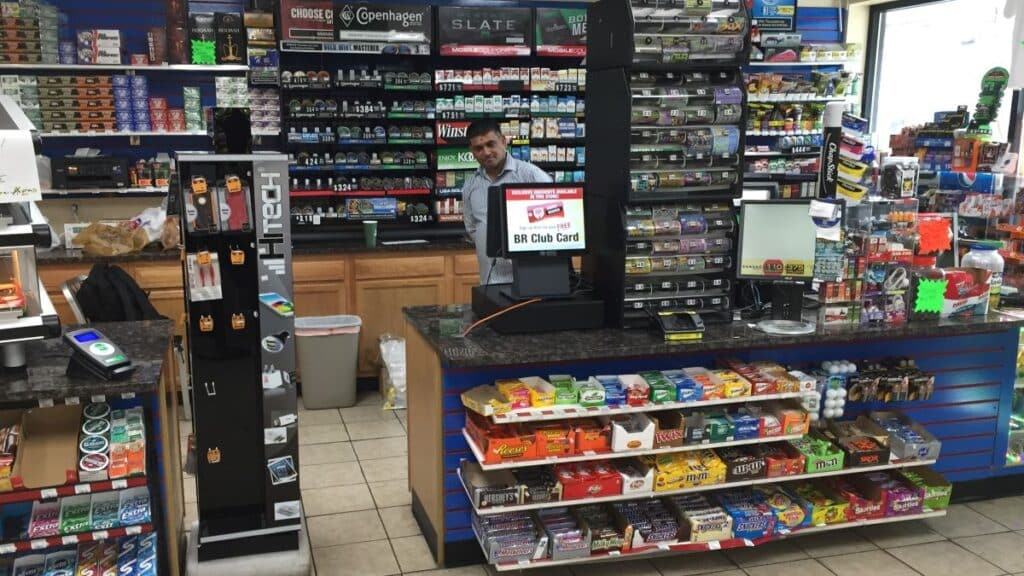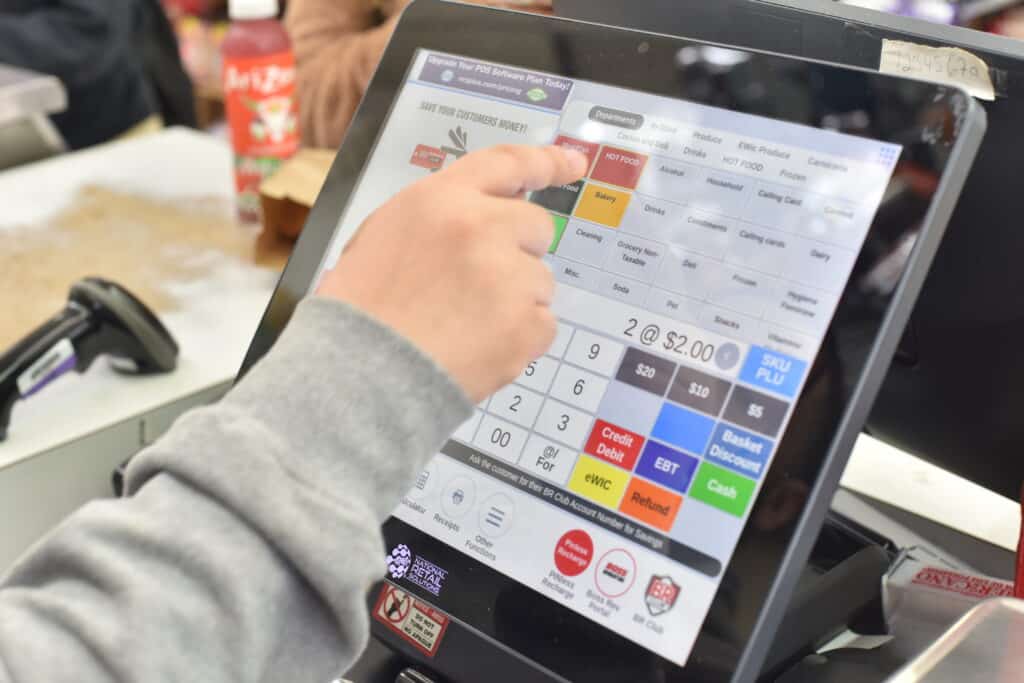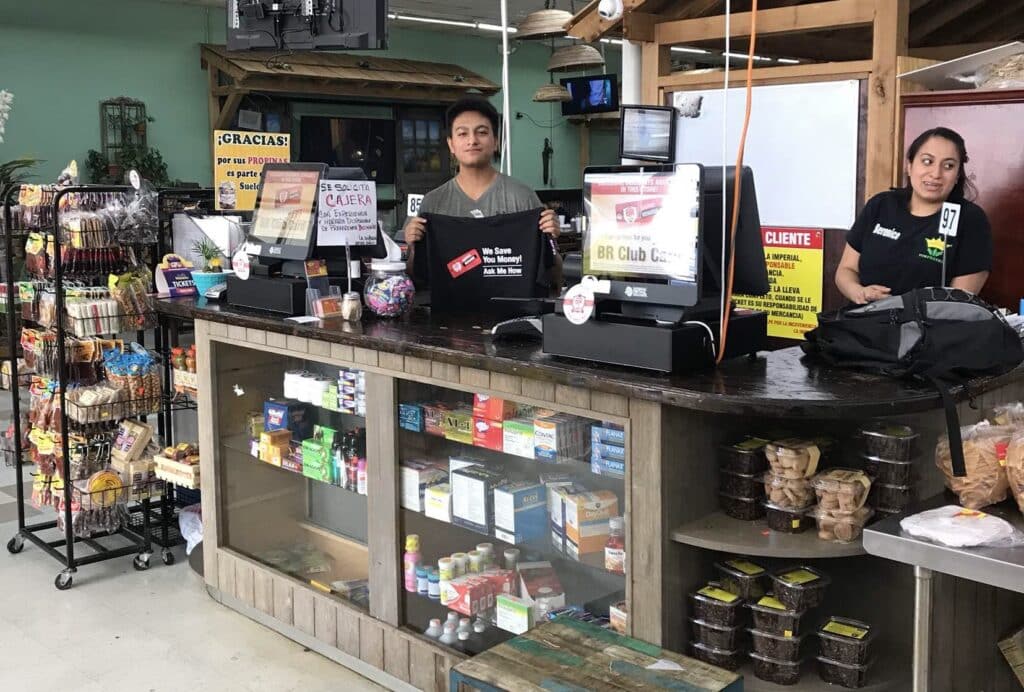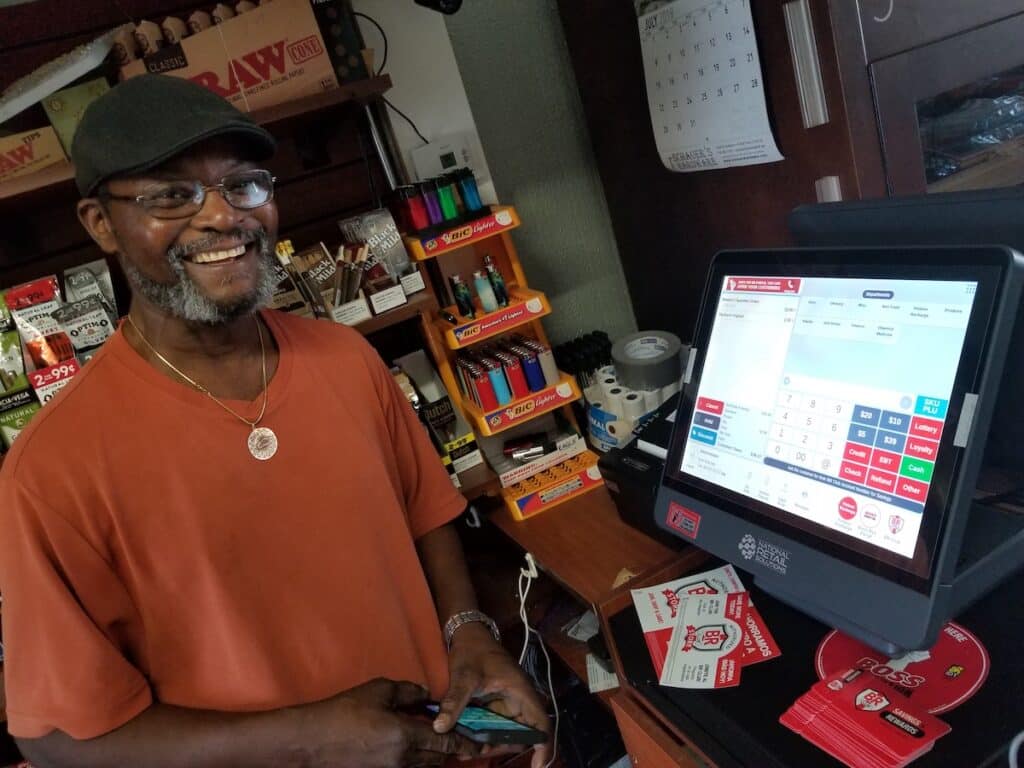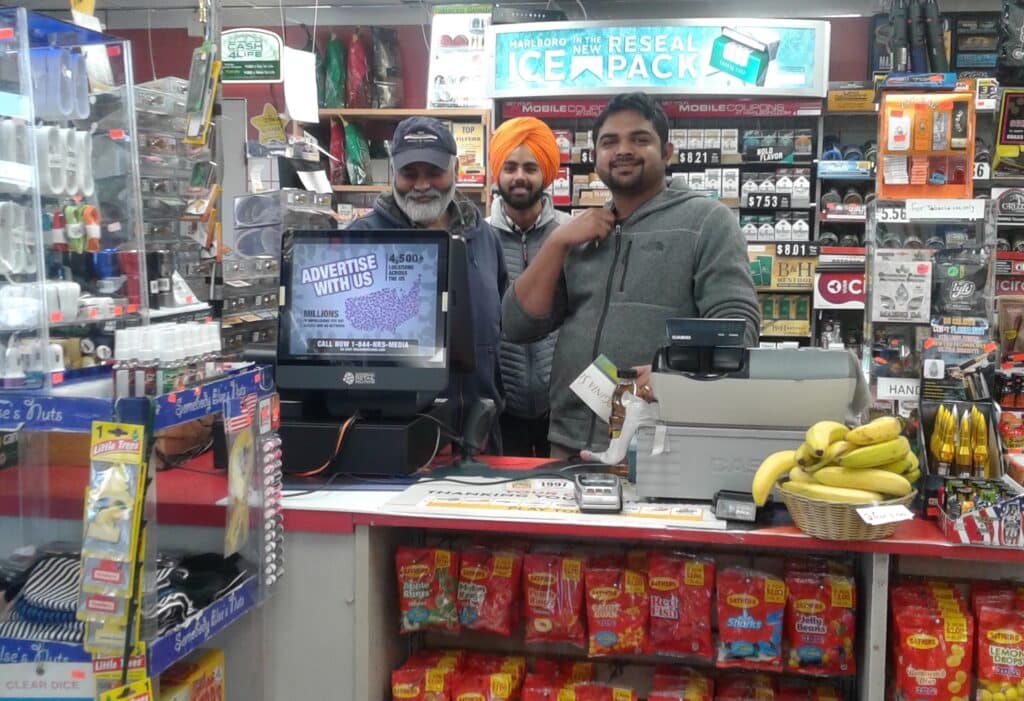- Modernize your retail store: Seven key strategies for today’s market.
- Boost sales and customer happiness: Simple, effective changes.
- Easy upgrades: Big results without big changes.
Modernize Your Retail Store: Keeping Up with Today’s Customer Needs
Retail is evolving fast. Stores today face new challenges and opportunities. Customers expect more, and technology keeps advancing.
To stay ahead, retailers must adapt. Modernizing your store isn’t just about looking good; it’s about meeting customer needs and improving sales.
This blog will explore seven effective ways to enhance customer experience, keep your business thriving, and bring your retail store into the modern era.
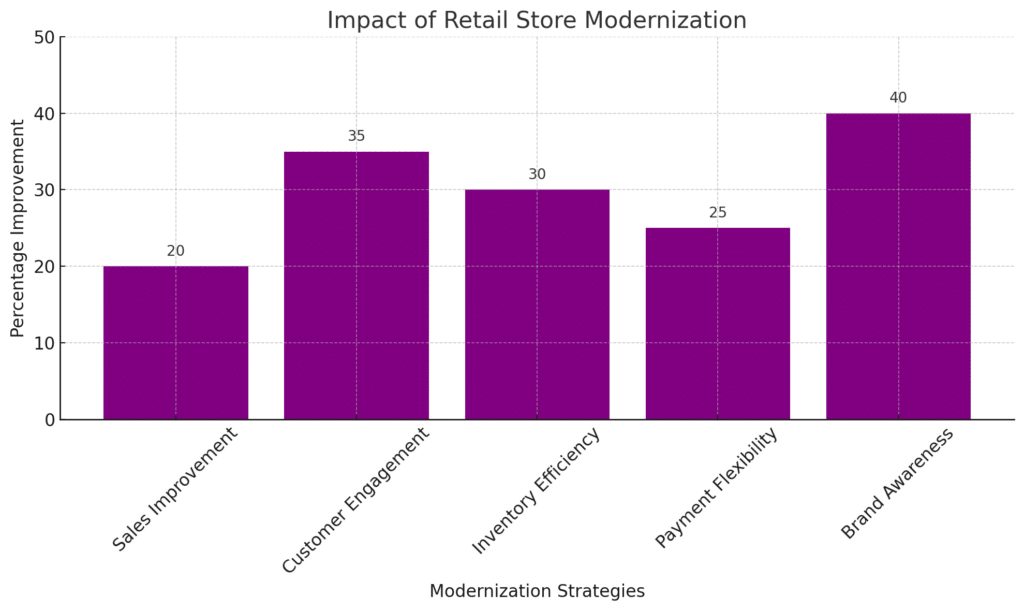
1. Optimizing Your Store Layout for Maximum Impact
| Key Takeaways |
| 1. Analyze foot traffic to understand customer movement. |
| 2. Design a shopper’s path to feature popular and promotional items. |
| 3. Use layout to create an engaging and intuitive shopping experience. |
Analyzing foot traffic is just the start. Notice how customers naturally move and browse. Most are right-handed, affecting how they shop.
When entering, their first glance is often to the right. Use this to your advantage. Place items you want to highlight in this prime spot. This strategic placement can significantly increase their visibility and sales potential.
Your store layout should tell a story, guiding customers smoothly from one section to another. Create a path that showcases popular and promotional items and leads them through a curated journey of your store’s offerings.
This isn’t just about placing products; it’s about crafting an intuitive and engaging experience for the shopper.
A thoughtful layout can create a comfortable flow, encouraging customers to explore and discover, ultimately boosting satisfaction and sales.
Pro Tip: Launch a simple ecommerce website offering a core selection of your most popular items, focusing on a user-friendly experience and secure payment processing.
2. Integrating Interactive Technology in Retail
- Interactive touchscreens: For product details, inventory checks, and personalized recommendations.
- Customer-facing screens: Displaying deals, promotions, and store information.
- Self-checkout stations: Allowing quick, convenient, and contactless payments.
- Digital signage: For engaging announcements, wayfinding, and advertising.
- Self-ordering kiosks: Speeds up the food line at the deli counter.
Retail stores gain a competitive edge by adding interactive technology.
Think of touchscreens spread across your store. They offer customers product information and check inventory, enhancing their shopping experience. Interactive tech like this increases customer satisfaction and independence.
Consider adding customer-facing screens, self-checkouts, and ordering kiosks. They cut down wait times and make shopping smoother.
Digital signage grabs attention and guides customers inside the store. Some supermarkets now use AI for “heat maps” to track where customers linger.
Such insights are crucial for optimizing product placement and store layout. With these technologies, your store stays modern and offers a more engaging shopping experience.
3. Embracing Mobile Payments for a Streamlined Retail Experience
- Speed up checkout with touchless mobile payment options.
- Enhance customer security and convenience.
- Offer flexible payment methods, including BNPL.
- Cater to all customers with EBT, eWIC, and various card options.
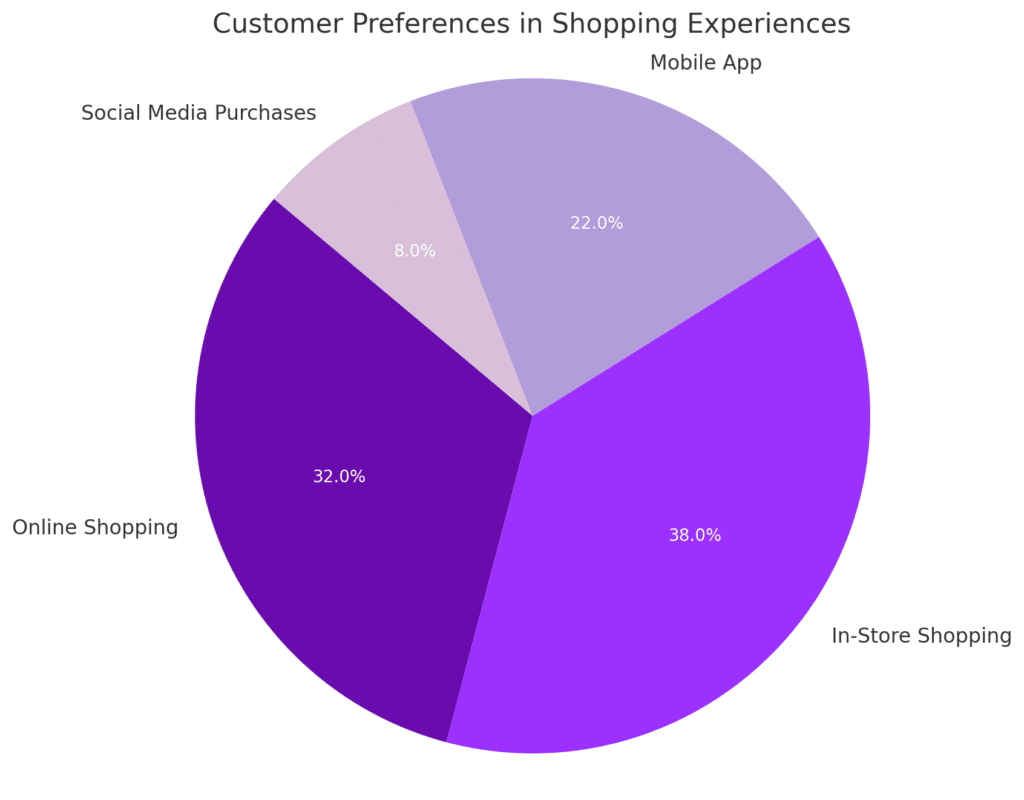
Mobile payments are reshaping the checkout process in retail. By adopting touchless methods, stores make transactions faster and more efficient.
Customers simply use their smartphones to pay, reducing the time spent in line. This speeds up the process and limits physical contact, which is a big plus for health and safety.
The sense of security and convenience with mobile payments is unmatched. Customers feel safer as they don’t have to carry cash or physical cards.
Also, retailers can offer more flexibility with options like buy-now-pay-later (BNPL). This approach caters to different customer needs, enhancing their shopping experience.
Additionally, integrating payment methods like EBT, eWIC, and various card options (tap, swipe, dip) ensures that all customers can easily transact.
Retailers looking to upgrade their payment systems should consider NRS Pay. NRS Pay provides a free credit card reader, ensuring no hidden costs. National Retail Solutions (NRS) stands out with our commitment to transparency with no long-term commitments and no early termination fees.
This makes NRS Pay an excellent choice for retailers aiming to modernize without worrying about extra costs or binding contracts.
4. Implementing a Seamless Omnichannel Experience in Retail
| Key Takeaways |
| 1. Enhance shopping flexibility and convenience. |
| 2. Ensure consistency across all shopping channels. |
| 3. Leverage technology to boost customer engagement and sales. |
Omnichannel retailing provides a unified shopping experience across online, in-app, and in-store platforms. This approach makes transitions between different shopping modes seamless for customers.
Benefits include increased convenience, a more personalized shopping experience, and the ability to shop in a way that suits individual preferences and lifestyles.
Key elements of a successful omnichannel strategy include a well-integrated point-of-sale system and a robust ecommerce platform. This integration ensures real-time syncing of inventory and prices across all channels.
Additionally, features like online order processing directly into the sales system and delivery services enhance the customer experience. Retailers can extend their reach beyond local customers, driving in-store and online sales.
Options like Buy Online, Pickup In-Store (BOPIS), and curbside service cater to the growing demand for flexibility in shopping and delivery options. Implementing these features can significantly improve customer satisfaction and loyalty.
Key Points for Omnichannel Experience:
- Unified shopping across online, app, and in-store platforms.
- Real-time syncing of inventory and pricing.
- Seamless online order processing into sales systems.
- Options like BOPIS and curbside service for convenience.
- Expanded reach to both local and non-local customers.
Pro Tip: Manage Your Online Reviews: Monitor review sites and social media. Respond promptly to both positive and negative reviews, demonstrating excellent customer service.
5. Leveraging Customer Data in Retail
- Loyalty programs gather customer data and build retention.
- Track transactions for personalized product recommendations.
- Analyze purchases for targeted marketing strategies.
- Tailor rewards programs to customer preferences.
- Use data to improve in-store service and inventory.
Retailers can greatly benefit from responsibly collecting and using customer data.
Loyalty programs are a key tool for this. They not only build customer retention but also provide valuable insights.
By tracking transactions, retailers can learn about customer preferences and habits. This data can inform personalized product recommendations and promotions tailored to customers’ interests.
Understanding customer behavior is vital for refining store offerings.
Transaction histories reveal what customers buy and how often, allowing for targeted marketing strategies.
Retailers can use this information to create rewards programs that genuinely resonate with customers, such as points-per-dollar or “Buy X, Get 1 Free” rewards.
These programs not only encourage repeat visits but also deepen customer loyalty.
Retailers can also use customer data to enhance in-store experiences.
Stores can optimize inventory and staffing by understanding popular products and peak shopping times. This leads to better customer service and a more enjoyable shopping experience.
Accurate data helps retailers make informed decisions, boosting sales and customer satisfaction.
Pro Tip: Invest in Inventory Management: Use a POS with an inventory system that syncs in-store and online stock to avoid overselling. This provides accurate item availability for customers.
6. Refresh Your Visual Merchandising
- Design creative, eye-catching window displays.
- Use lighting and layout to set the mood and tell your brand’s story.
- Keep displays uncluttered for a pleasant shopping experience.
Refreshing your store’s visual merchandising is key to attracting and retaining customers.
Start with your window displays; they should be eye-catching and inspiring. This is your chance to make a first impression, so use creativity to draw people in.
Inside the store, lighting and product arrangements are crucial. They set the mood and help tell your brand’s story.
Good lighting highlights products and creates an inviting atmosphere. Arrange products in a way that tells a story or demonstrates their use.
Finally, remember to keep your displays and layouts clean and uncluttered. An overcrowded space can overwhelm customers and make it hard for them to focus on individual items.
A well-organized store encourages customers to explore and enjoy their shopping experience.
7. Offer Unique In-store Experiences
- Host engaging workshops and events in-store.
- Create interactive areas for brand engagement.
- Collaborate with local businesses and influencers.
Offering unique in-store experiences can set your retail store apart. Hosting workshops, demonstrations, or pop-up events engages customers beyond traditional shopping. These activities can educate customers about your products and create a memorable shopping experience.
Creating interactive areas in your store where customers can engage with your brand adds value. This could be a space for product trials, a relaxing lounge, or an eating deli area.
The goal is to make the store more than just a place to buy things but a destination for experiences.
Partnering with local businesses or influencers for special events or collaborations can also attract new customers and generate buzz. It’s a great way to create a sense of community and offer something fresh and exciting to your customers.
Bonus Tip: Upgrade Your Point Of Sale (POS) System
- Streamlines business operations.
- Provides valuable sales and inventory insights.
- Enhances customer engagement and retention.
- Facilitates seamless omnichannel retailing.
- Supports various payment methods for improved checkout.
Upgrading your Point of Sale (POS) system is crucial in modern retail. A sophisticated POS system, like those offered by National Retail Solutions (NRS), integrates various aspects of retail management.
This integration includes sales tracking, inventory management, customer data analysis, and business operations streamlining.
A modern POS system can also offer robust reporting features. These reports provide insights into sales trends, inventory needs, and customer preferences, helping you make informed business decisions.
Additionally, features like loyalty program integration can enhance customer engagement and retention.
Moreover, a POS system with e-commerce integration facilitates seamless omnichannel retailing. It ensures consistency in pricing and inventory across online and in-store platforms, improving the customer experience.
Such systems also support various payment methods, catering to customer preferences and improving checkout.
Consider upgrading to a more advanced POS system to streamline operations, gain valuable insights, and enhance customer experience.
A system that integrates sales, inventory, and customer data can transform your retail business.
Wrapping Up: The Importance of Modernizing Your Retail Store
- Modernization meets current customer expectations.
- Improves overall shopping experience.
- Doesn’t require a complete store overhaul.
- Start with strategic, impactful updates.
- Small changes can lead to big improvements.
- Align updates with store needs and customer base.
- Noticeable benefits in customer satisfaction and sales.
Modernizing your retail store is essential in today’s fast-paced market. It’s not just about keeping up with trends but meeting customer expectations and improving their shopping experience.
Modernization doesn’t mean a complete overhaul. It’s about making smart, strategic updates that make sense for your business.
Some modernizing techniques can lead to noticeable improvements. Small changes can make a big difference in customer satisfaction and sales.
Start with what aligns best with your store’s needs and customer base, and you’ll see the benefits unfold.
